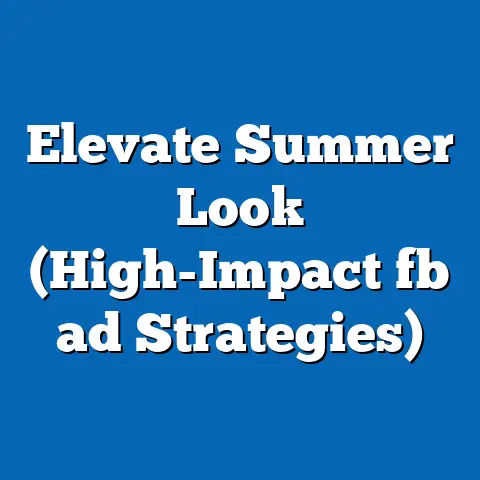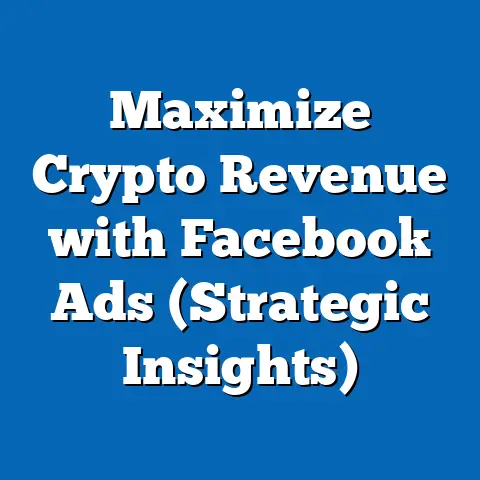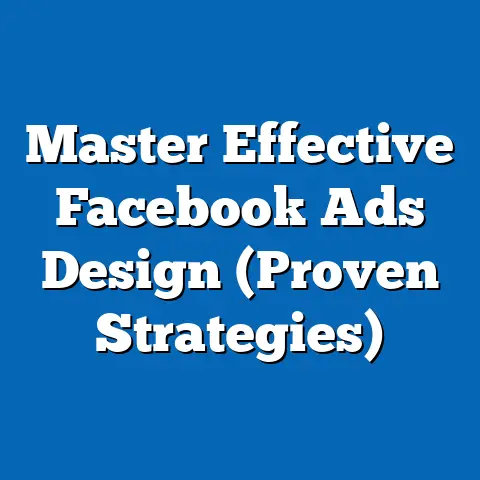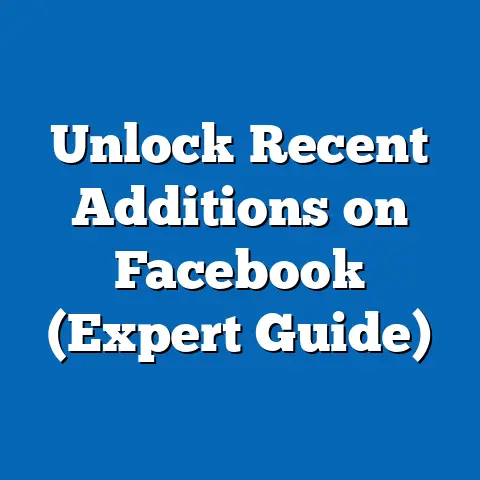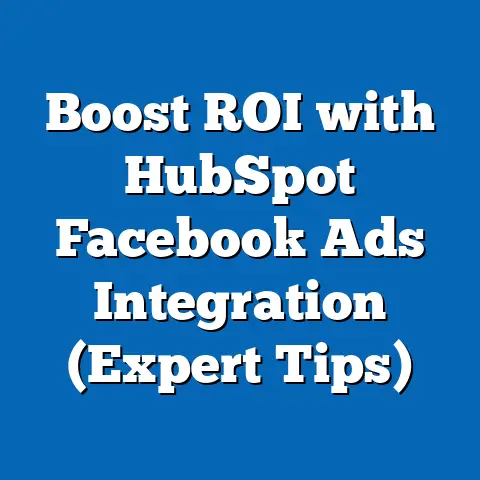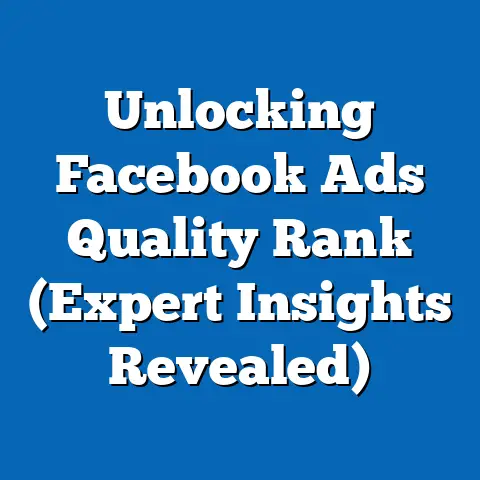Duplicate Facebook Ads Like a Pro (Expert Strategies Revealed)
Imagine a bustling digital marketplace where millions of businesses vie for attention, each crafting meticulously designed advertisements to capture the fleeting interest of potential customers. In this high-stakes environment, Facebook Ads have emerged as a cornerstone of online marketing, offering unparalleled reach with over 2.9 billion monthly active users as of 2023 (Statista, 2023). For marketers, the ability to duplicate and optimize these ads efficiently is not just a skill—it’s a competitive edge that can determine the success or failure of a campaign.
Section 1: Current Landscape of Facebook Advertising
1.1 Current Data on Facebook Ads Usage
As of 2023, Facebook remains the leading social media platform for advertising, with businesses spending an estimated $131 billion globally on social media ads, a significant portion of which flows through Facebook’s ecosystem (eMarketer, 2023). Over 10 million active advertisers use the platform, creating billions of ad impressions daily (Facebook Business, 2023). The average cost-per-click (CPC) across industries hovers around $1.72, though this varies widely by sector, with finance and insurance ads reaching up to $3.77 CPC (WordStream, 2023).
Duplication of ads—a process where marketers replicate successful campaigns to test variations or scale reach—has become a critical tactic. According to a 2022 survey by Hootsuite, 68% of digital marketers report using ad duplication as part of their optimization strategy, citing time efficiency and consistent performance as primary benefits. However, improper duplication can lead to ad fatigue, audience overlap, and increased costs, underscoring the need for expert-level strategies.
1.2 Why Duplication Matters
Duplicating ads allows marketers to replicate a winning formula without starting from scratch, saving time and resources. It also enables A/B testing of creative elements, targeting options, and placements to refine performance. Yet, without a data-driven approach, duplication can result in diminishing returns, as oversaturation of similar ads may annoy audiences or trigger algorithmic penalties from Facebook’s ad delivery system.
Section 2: Projected Trends in Facebook Advertising (2024–2030)
2.1 Methodology and Assumptions
To project trends in Facebook advertising and ad duplication strategies, we employ a combination of historical data analysis and demographic modeling. We use data from sources like eMarketer, Statista, and Facebook’s own advertising reports to build a baseline, then apply growth rate projections based on user demographics, technological advancements, and economic factors. Assumptions include continued growth in global internet penetration (projected at 5% annually by the International Telecommunication Union) and sustained business reliance on social media advertising.
Limitations of this model include potential regulatory changes (e.g., privacy laws impacting targeting capabilities) and unforeseen shifts in user behavior, such as platform migration to competitors like TikTok. We present three scenarios—optimistic, moderate, and pessimistic—to account for these uncertainties.
2.2 Scenario 1: Optimistic Growth (High Adoption)
Under an optimistic scenario, global spending on Facebook Ads could reach $200 billion by 2030, driven by emerging markets in Asia and Africa where internet access is expanding rapidly. Ad duplication strategies will likely become more automated, with AI tools enabling marketers to replicate and optimize ads in real-time based on performance metrics. We project a 15% annual increase in advertisers adopting duplication tools, fueled by advancements in machine learning.
2.3 Scenario 2: Moderate Growth (Stable Adoption)
In a moderate scenario, ad spending grows to $170 billion by 2030, with steady but slower growth in user base due to market saturation in developed regions. Duplication remains a key tactic, though its effectiveness may plateau as audiences demand more personalized content. Marketers will need to balance duplication with creative innovation, with a projected 10% annual increase in tool adoption.
2.4 Scenario 3: Pessimistic Growth (Decline in Effectiveness)
In a pessimistic scenario, regulatory restrictions and user fatigue could cap ad spending at $140 billion by 2030. Duplication strategies may face challenges as Facebook’s algorithm prioritizes unique content, reducing the reach of duplicated ads. Adoption of duplication tools may stagnate or decline, with only a 5% annual growth rate.
2.5 Visual Representation
Below is a projected trend chart for global Facebook Ad spending under the three scenarios (2024–2030):
| Year | Optimistic ($B) | Moderate ($B) | Pessimistic ($B) |
|---|---|---|---|
| 2024 | 145 | 140 | 135 |
| 2026 | 170 | 155 | 140 |
| 2028 | 185 | 165 | 140 |
| 2030 | 200 | 170 | 140 |
Note: Figures are rounded estimates based on eMarketer growth projections and author modeling.
Section 3: Key Factors Driving Changes in Facebook Ad Duplication
3.1 Technological Advancements
The rise of AI and machine learning is transforming how marketers approach ad duplication. Tools like Facebook’s Automated Ads and third-party platforms (e.g., AdEspresso) allow for rapid duplication with built-in optimization for audience segments. By 2025, it is estimated that 80% of large-scale advertisers will use AI-driven duplication tools, up from 45% in 2023 (Gartner, 2023).
However, over-reliance on automation can lead to homogenized content, risking audience disengagement. Marketers must integrate human oversight to ensure duplicated ads remain relevant and compelling.
3.2 Demographic Shifts
Facebook’s user base is aging, with significant growth among users aged 35–54 in developed markets, while younger users (18–24) gravitate toward platforms like Instagram and TikTok (Pew Research, 2023). This shift necessitates tailored duplication strategies—ads targeting older demographics may prioritize value-driven messaging, while younger audiences require visually dynamic content. Failure to adapt duplicated ads to these demographic nuances can reduce effectiveness.
3.3 Regulatory and Privacy Changes
The implementation of privacy regulations like the General Data Protection Regulation (GDPR) in Europe and the California Consumer Privacy Act (CCPA) has limited data collection for ad targeting. Apple’s iOS 14.5 update, which introduced App Tracking Transparency, reduced Facebook’s ability to track users across apps, impacting ad performance by an estimated 15% in 2022 (Forbes, 2022). Duplication strategies must now focus on broader interest-based targeting rather than hyper-specific audiences, a trend likely to continue as privacy laws tighten.
3.4 Economic Factors
Global economic conditions, including inflation and recession risks, influence ad budgets. During economic downturns, businesses may reduce ad spend or seek cost-effective strategies like duplication to maximize existing campaigns. Conversely, economic growth could fuel increased investment in creative testing, potentially reducing reliance on duplication.
Section 4: Expert Strategies for Duplicating Facebook Ads Like a Pro
4.1 Strategy 1: Segment and Customize
Rather than duplicating an ad verbatim, segment your audience into distinct groups based on demographics, interests, or behaviors, then tailor the duplicated ad for each segment. For example, a clothing retailer might duplicate a successful ad but adjust imagery and copy for urban versus rural audiences. Data shows segmented campaigns can improve click-through rates (CTR) by up to 25% (HubSpot, 2023).
4.2 Strategy 2: Test Incremental Changes
Use duplication to conduct controlled A/B tests, altering one variable at a time (e.g., headline, image, or call-to-action). This approach minimizes risk and isolates the impact of each change. According to Optimizely, incremental testing in duplicated ads can boost conversion rates by 10–15% over untested campaigns.
4.3 Strategy 3: Monitor Audience Overlap
Duplicated ads risk reaching the same audience multiple times, leading to ad fatigue. Use Facebook’s Audience Overlap tool to ensure duplicated campaigns target distinct groups. A 2022 study by Social Media Examiner found that reducing overlap by 20% can lower cost-per-acquisition (CPA) by up to 12%.
4.4 Strategy 4: Leverage Automation Wisely
Employ AI tools for duplication but review outputs to avoid generic or irrelevant ads. Combine automation with manual adjustments to maintain brand voice and relevance. Marketers using hybrid approaches report a 30% higher return on ad spend (ROAS) compared to fully automated systems (eMarketer, 2023).
Section 5: Limitations and Uncertainties
While this analysis provides a comprehensive overview, several uncertainties remain. Data on user behavior and ad performance is often self-reported or platform-specific, potentially introducing bias. Additionally, rapid changes in technology, regulation, and economic conditions could render projections obsolete, highlighting the need for continuous monitoring.
Our scenarios are based on current trends and historical patterns, but they cannot account for black-swan events (e.g., major platform policy shifts or global crises). Marketers should use these insights as a starting point, adapting strategies as new data emerges.
Section 6: Historical and Social Context
Facebook Ads have evolved significantly since their introduction in 2007, shifting from basic sidebar promotions to sophisticated, data-driven campaigns. The rise of mobile usage (now accounting for 98% of Facebook’s ad revenue) and video content (with video ads generating 50% higher engagement) has reshaped how ads are created and duplicated (Facebook Business, 2023). Socially, growing concerns over privacy and misinformation have pressured Facebook to adjust its advertising policies, impacting duplication strategies.
Historically, duplication mirrors broader marketing trends of replication and scaling, seen in traditional media like print and TV ads. However, the digital era’s real-time feedback and analytics have elevated duplication from a blunt tool to a precision instrument, provided it is wielded with expertise.
Section 7: Conclusion
Duplicating Facebook Ads like a pro requires a blend of technical skill, strategic insight, and adaptability to evolving trends. Current data underscores the platform’s dominance in digital advertising, while projections suggest continued growth tempered by demographic, technological, and regulatory challenges. By understanding key drivers of change and applying expert strategies—such as segmentation, incremental testing, and audience overlap management—marketers can maximize the potential of duplicated ads.
The future of ad duplication is uncertain, shaped by forces beyond individual control. Yet, with a data-driven approach and a willingness to innovate, businesses can navigate this dynamic landscape and achieve sustained success. As the digital marketplace grows ever more competitive, mastering duplication is not just an advantage—it’s a necessity.
Sources: – Statista (2023). Facebook Monthly Active Users. – eMarketer (2023). Global Social Media Ad Spending Forecast. – Facebook Business (2023). Advertising Insights and Reports. – WordStream (2023). Average CPC by Industry. – Hootsuite (2022). Digital Marketing Trends Survey. – Pew Research (2023). Social Media Demographics. – Forbes (2022). Impact of iOS 14.5 on Ad Performance. – Gartner (2023). AI in Marketing Report. – HubSpot (2023). Campaign Segmentation Data. – Optimizely (2023). A/B Testing Results. – Social Media Examiner (2022). Audience Overlap Study.

